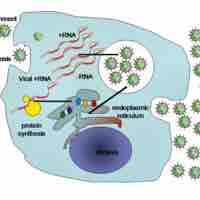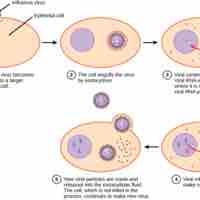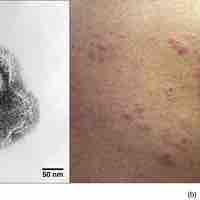Section 5
Viral Replication
Book
Version 6
By Boundless
By Boundless
Boundless Microbiology
Microbiology
by Boundless
5 concepts

General Features of Virus Replication
Virologists describe the formation of viruses during the infection process in target host cells as viral replication.

Steps of Virus Infections
Viral infection involves the incorporation of viral DNA into a host cell, replication of that material, and the release of the new viruses.
Tissue Tropism in Animal Viruses
Host tropism refers to the way in which viruses/pathogens determine which cells become infected by a given pathogen.

Animal Viruses
Animal viruses have their genetic material copied by a host cell after which they are released into the environment to cause disease.

Plant Virus Life Cycles
Plant viruses are often spread from plant to plant by organisms known as vectors.